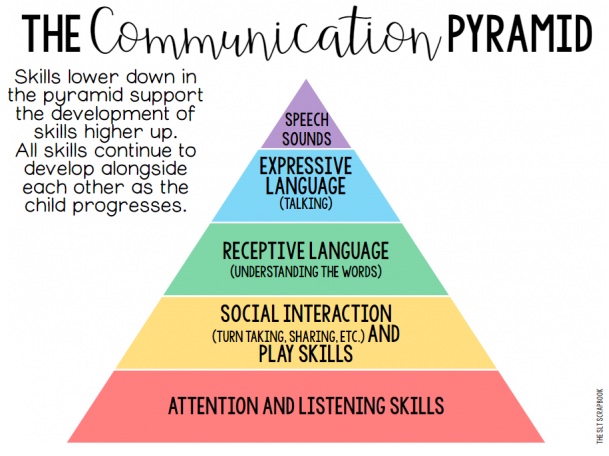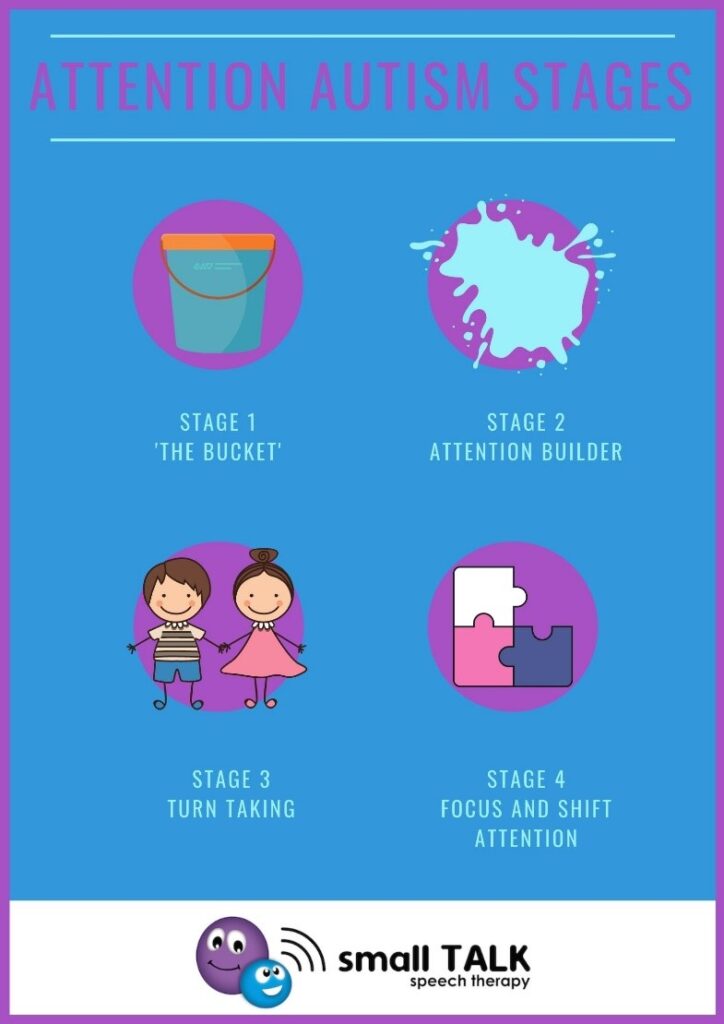
“Joint attention is the first step into a shared world with others.” Babies – Netflix Series. Without the ability to focus and sustain attention, social interactions cannot take place. Research suggests that children with Autism often struggle with joint attention (Mundy et al., 1990).
Communication development is often represented as a pyramid with one skill building on the last (see below). Attention and listening are the foundations that all other skills are built on. Addressing speech and language difficulties without good attention skills is extremely difficult. Unfortunately, building attention is often overlooked as a communication goal, but if a child can’t attend to a therapy activity, they will have difficulty learning and generalising higher order skills.

In 1978, Cooper, Moodley and Reynell broke attention and listening skills down in the following way:
Children present with fleeting attention. They are easily distracted and their attention flits between people and objects.
Children have ‘rigid attention’, where they concentrate on a task of their choosing. They may not respond to their name being called and do not manage interruption
Children progress to ‘single channelled attention’. They can attend to an activity that is suggested/presented by an adult. They can follow simple instructions but cannot do this while completing a task simultaneously. For example if a child is playing with blocks and you need them to put their shoes on, you will need them to stop playing before you given them an instruction, ‘can you put your shoes on please.’
Children have ‘focused attention’, they can only concentrate on one thing at time, but they can now shift their attention to an alternative activity without support. At this stage, you still may need to call out the child’s name to gain their initial attention, but they can respond to you quickly.
Children should now be developing ‘two channelled attention’, where they should be able to listen to instructions while completing another activity at the same time.
By the time a child is 6, they should have developed ‘integrated attention’. They should be able to attend to activities without frequent reminding to stay on task and be able to attend to people and activities in numerous environments.
If you are concerned about your child’s attention, book a consultation with one of our therapists. At small TALK our therapists are trained to build children’s attention, and Simone has completed training in the Attention Autism program. This program was designed to help build communication, interaction, attention and leaning skills in children with Autism Spectrum Disorder. The activities within the program are motivating are broken down into four progressive stages. Attention Autism creates an environment where children and adults can share a fun and motivating experiencing worth communicating about. The program is broken into four stages. These stages are progressive and require increased attention and listening demands.

If you are concerned about your child’s attention and communication, book a consultation with a Speech Pathologist for further investigation and assessment.
Cooper, Moodley and Reynell, (1978) Helping Language Development.
Elks and McLachlan, (2009) Early Language Builders.
Wicks, W., Paynter, J., & Westerveld, M., (2020). Looking or talking: Visual attention and verbal engagement during shared book ready of preschool children on the autism spectrum. Autism, 24 (6) 1-16.
Babies, Directed by Thomas Balmès, Netflix, 2020.